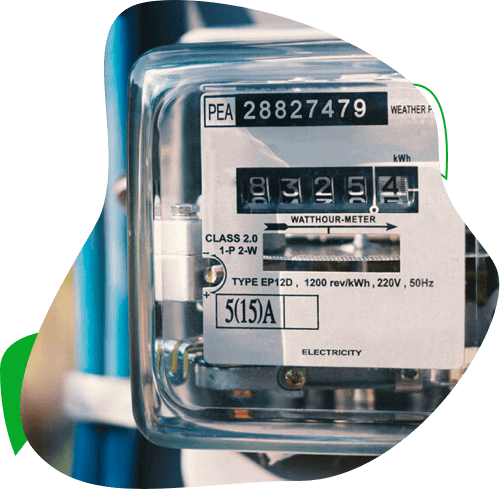No standing charge tariffs explained
Find out about energy tariffs with no standing charges.

Compare Energy
What is a standing charge?
A standing charge is a basic fee you pay to have access to energy. It’s a flat rate paid to the energy company to keep you hooked up – think of it as a continuous installation fee. You then pay for your actual energy consumption (calculated in kilowatt-hours, kWh) in addition to the standing charge. If you feel a bit peeved about paying two fees, take some solace in that almost every single energy plan in the UK works this way – you will find standing charges usually come as standard on both standard variable tariffs and fixed price energy tariffs.
Standing charges are usually calculated at a daily rate. Yet when you compare energy deals you’ll quickly notice charges can vary hugely across different energy suppliers, with gas typically costing between 5p and 60p per day, and electricity between 10p and 80p. Price variables include estimated usage figures and location, amongst others.
Standing charges used to be mandatory, but in 2016 Ofgem declared this was no longer a requirement. Despite this, almost all gas and electric tariffs are still charging for standing charge tariffs.
What is a no standing charge tariff?
By contrast, a no standing charge tariff – also known as a zero standing charge tariff – is an energy plan which allows you to only pay for the energy you consume. Which sounds great, if you can bag a good deal, but remember energy prices aren’t based on standing charges alone.
The general trade-off for only paying for what you use is that the unit price of energy will be much greater. That is, on a no standing charge tariff you’ll pay a lot more for each kilowatt hour of energy you use.
Energy Deals with No Standing Charge
Currently, hardly any companies offer no standing charge tariffs for electricity and gas, but two that do are:
- Ebico – as a not-for-profit energy company, only charging customers for what they use fits with their business values.
- Utilitia – they use smart meters and a pay-as-you-go model by use of prepayment meters. Prepayment meters aren’t widely used anymore, but if you do have one installed then it’s worth looking at Utilita, as otherwise you will still pay a standing fee even if you don’t have credit on your meter.
The energy market is extremely competitive and constantly evolving, especially with the push towards renewables and energy conservation. So, it’s not to say that more no standing charge energy deals won’t appear, but when you compare energy plans specifically with zero charge, you’ll see you can’t be too picky.
Is a no standing charge tariff worth it?
We mentioned earlier that the unit price of your energy will be higher on a no standing charge tariff. So, it’s all well and good not paying a daily rate, but if you’re paying considerably more when you do consume energy then that’s not bagging yourself a good energy deal in our books.
Our advice is, if your property is vacant for a good chunk – and we mean a good chunk – of the year, then it could well be a viable money saver for you, but there’s no definitive answer. Your best move is to spend some time with a calculator, working out standing charges, unit costs and annual consumption; this will help to ensure you get yourself the best energy deal for your set up.
Should I look for standing charge tariffs, then?
We’ve outlined that comparing energy plans specifically for no standing charge tariffs will yield extremely limited options. So, you may find that you’ll get cheaper energy with a standing charge tariff – cheaper, even, than a no standing charge – purely because of the vast pool of suppliers available.
Do consider location, too, as your standing charge will also vary depending on where you live. We mentioned daily rates for gas and electricity can fall within quite a broad range, and it may well be that your area code bags the cheaper end of the deal, making it the more economical option.
Ultimately, consumers infrequently meet the criteria that makes a no standing charge tariff worth it, and even if they do, they’re not met with a load of options. With the deals currently available, it may be that standing charges are still the best way to get cheap energy.
**£350 is the average saving achieved by 10% of all customers who switched their dual fuel supply in 2019 via our partner energy journey
Last reviewed: 09 October 2022
Next review: 09 November 2022